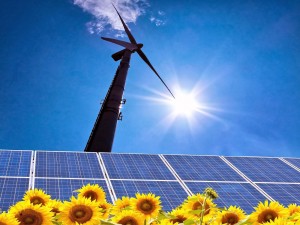 Tracking the European Union’s progress towards 2020 targets for energy improvements surrounding more efficient buildings, industrial processes, products and vehicles in transport infrastructures linking major hubs and centers.
Tracking the European Union’s progress towards 2020 targets for energy improvements surrounding more efficient buildings, industrial processes, products and vehicles in transport infrastructures linking major hubs and centers.
by Flagshgip Initiative European Commission
Much has been achieved since the EU adopted its first package of climate and energy measures in 2008. The EU is now well on track to meet the 2020 targets for greenhouse gas emissions reduction and renewable energy and significant improvements have been made in the intensity of energy use thanks to more efficient buildings, products, industrial processes and vehicles. These achievements are all the more significant given that the European economy has grown by around 45% in real terms since 1990. The 20/20/20 targets for greenhouse gas emissions, renewable energy and energy savings have played a key role in driving this progress and sustaining the employment of more than 4.2 million people in various eco-industries, with continuous growth during the crisis.
The Union has set itself three targets to be attained by 2020 for greenhouse gas emissions reductions (20%), the share of renewable energy (20%) and improvements in energy efficiency (20%). Current energy and climate policies are delivering substantial progress towards these 20/20/20 targets: Much has also changed since 2008. Most obvious is the impact of the economic and financial crisis which has affected Member States’ capacity to invest. Fossil fuel prices remain high which negatively affects the Union’s trade balance and energy costs. In 2012, the EU’s oil and gas import bill amounted to more than 400 billion or approximately 3.1% of the Union’s GDP. There has been a decisive shift in the center of gravity of global energy demand towards emerging economics, notably China and India.
At the same time, households and industrial users are increasingly concerned by rising energy prices and price differentials with many of the Union’s trading partners most notably the USA. The internal energy market has developed but new risks for fragmentation have emerged. The EU’s Emissions Trading System is not driving investments in low-carbon technologies sufficiently well, increasing the likelihood of new national policies that undermine the level playing field the ETS was meant to create.
Technologies
While renewable energy technologies have matured and costs have fallen substantially, the rapid development of renewable energy sources now poses new challenges for the energy system. Many energy using products are now more efficient and consumers are benefitting from real energy and financial savings. At the same time, there has been further confirmation of the likely impact of human influence on climate change and of the need for substantial and sustained reductions of greenhouse gas emissions to limit further changes in the earth’s climate. It is now time, therefore, to reflect on these developments and the policy framework we need for 2030.
There is a need to continue to drive progress towards a low-carbon economy which ensures competitive and affordable energy for all consumers, creates new opportunities for growth and jobs and provides greater security of energy supplies and reduced import dependence for the Union as a whole. We need to make an ambitious commitment to make further greenhouse gas emission reductions in line with the cost-effective pathway described in the 2050 roadmaps, and to do so in time for the upcoming negotiations on an international climate agreement. We need to provide regulatory certainty as early as possible for investors in low-carbon technologies, to spur research, development and innovation and up-scaling and industrialization of supply chains for new technologies.
This must all be done in a way which takes account of the prevailing economic and political realities and builds on our experience of the current policy framework. Against this background, the 2030 policy framework should be based on full implementation of the 20/20/20 targets and the following:
• an ambitious commitment to reduce greenhouse gas emissions in line with the 2050 roadmaps. Delivery of this commitment should follow a cost-efficient approach which responds to the challenges of affordability, competitiveness, security of supply and sustainability, and which takes account of current economic and political circumstances
• simplification of the European policy framework while improving complementarity and coherence between objectives and instruments
• within this EU framework, providing flexibility for Member States to define a low carbon transition appropriate to their specific circumstances, preferred energy mix and needs in terms of energy security and allowing them to keep costs to a minimum
• strengthening regional cooperation between Member States to help them meet common energy and climate challenges more cost-effectively while furthering market integration and preventing market distortion
• building on the momentum behind the development of renewables with a policy based on a more cost-efficient approach which reinforces the European dimension and has further integration of the internal energy market and undistorted competition at its core.
• a clear understanding of the factors that determine energy costs so that policy is based on facts and evidence so that we are clear what can be influenced through national and Union policy and what cannot. Ensuring that the competitiveness of business and affordability of energy for consumers are central in determining the objectives of the framework and the instruments to implement it.
• improving energy security, while delivering a low-carbon and competitive energy system, through common action, integrated markets, import diversification, sustainable development of indigenous energy sources, investment in the necessary infrastructure, end-use energy savings and supporting research and innovation.
• enhancing investor certainty by providing clear signals now on how the policy framework will change after 2020 and by ensuring that substantial changes to existing objectives and instruments do not take effect before this date.
• fair sharing of efforts between Member States which reflects their specific circumstances and capacities.
